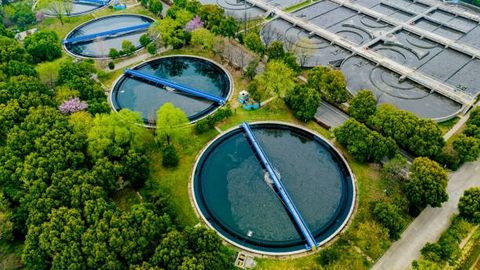Identifying and Characterizing PFAS Compounds
While standardized analysis methods work well for their intended scope, PFAS continue to present challenges in detection that scientists must work to overcome.

Complete the form below to unlock access to ALL audio articles.
Per- and polyfluoroalkyl substances (PFAS) are a large family of synthetic chemicals, first discovered in the 1940s. On account of their superior ability to resist heat, oil and stains, PFAS quickly became incorporated into everyday products such as cosmetics, firefighting foams, cookware and other household materials.1
In the following decades, scientists would begin to raise concerns over the environmental impact of PFAS, as these compounds do not readily break down in nature and so can become a persistent pollutant. In response, some jurisdictions would introduce regulations aimed at discouraging the use of PFAS, in addition to implementing testing regimens to help mitigate the risk of PFAS pollution in drinking water, food, agriculture and wildlife environments.2
Scientifically speaking, the detection and characterization of PFAS is no easy task. The sheer volume of different compounds that exist under the PFAS umbrella can make it difficult for analytical scientists to develop tests that confidently quantify the total amount of PFAS in any given sample. Additionally, the complexity of the samples that need to be tested can add another layer of difficulty when it comes to analysis – soils, foodstuffs and other matrices often require unique analytical approaches.
Despite these complications, in light of the growing volume of scientific evidence outlining links between PFAS exposure and negative health effects, the ability to detect and characterize PFAS compounds adequately in a variety of sample types is key to safeguarding public health.3
PFAS as an environmental hazard
The commercial success and widespread use of PFAS compounds can largely be traced back to the need for materials and coatings with high degrees of thermal and chemical stability – something that PFAS compounds deliver due to the strength of their carbon–fluorine bonds.
This resilience and hardiness can be a double-edged sword; it also causes PFAS to accumulate in the environment and makes them difficult to tackle using traditional remediation strategies.4
“PFAS have been used for many decades before the scientific community discovered that they were harmful – and because PFAS are so persistent, they have built up in our bodies, wildlife, waterways, food and more,” said Dr. Lydia Jahl, science and policy manager at the Green Science Policy Institute. “That means we have relatively high concentrations of harmful chemicals all over the world without easy ways to remove them.”
Scientists are still determining the precise health impacts of PFAS pollution and their bioaccumulation in human and animal tissues. However, epidemiological studies have demonstrated links between exposure to specific PFAS and a number of negative health effects, including altered immune and thyroid function, insulin dysregulation, kidney disease, cancer and adverse reproductive and developmental outcomes.3
The increased scientific attention and regulatory scrutiny given to PFAS in recent decades has led to the development of several techniques and standard analytical methods that can be used to identify and characterize specific PFAS, as well as determine the total volume of PFAS in a sample.
“There are common mass spectrometry (MS) techniques used to detect PFAS in a variety of environmental samples,” explained Jahl. “Other methods like total organic fluorine (TOF) will identify organic fluorine in a sample, which is likely PFAS. More innovative methods like particle induced gamma-ray emission (PIGE) spectroscopy, pioneered by Dr. Graham Peaslee at the University of Notre Dame, is a rapid screening method for total fluorine, which is a marker for PFAS but includes non-PFAS too.”5
Standard analytical methods for PFAS detection
To date, the US Environmental Protection Agency (EPA) has developed, validated and published three standard methods (Method 533, Method 537 and its updated version Method 537.1) to be used for detecting and analyzing a total of 29 unique PFAS compounds in drinking water.6
Method 537.1 was first published by the agency in 2009 and has been updated as more PFAS with the potential to contaminate drinking water have been identified. The method is effective for 18 compounds, including the most notorious PFAS, perfluorooctane sulfonate (PFOS) and perfluorooctanoic acid (PFOA), as well as the common industrial PFAS replacement compound, hexafluoropropylene oxide dimer acid (HFPO-DA).
Analytically, the method relies on passing a water sample through a solid phase extraction (SPE) cartridge that contains polystyrene divinylbenzene to extract the relevant PFAS analytes. Using a methanol solvent, the compounds of interest are removed from the solid sorbent and analyzed using liquid chromatography with tandem mass spectrometry (LC-MS/MS).
Method 533 is similar, also using SPE with LC-MS/MS, but with the addition of isotope dilution standards. These isotopically labeled analogs of the method analytes in question make it easier to compare signal ratios and intensity, improving the accuracy of the method.
In addition to these, the EPA is also in the process of developing another method, currently referred to as “Draft Method 1633” for the detection of PFAS in non-potable water and other environmental media, including soils or sediment. While the method is still only a draft as of December 2023, the proposed technique would make use of SPE cartridge clean-up procedures for sample prep, followed by LC-MS/MS in multiple reaction monitoring (MRM) mode. Again, the spiking of samples with isotopically labeled standards is also suggested.
The EPA is also currently engaged in efforts to expand their list of standard analytical methods (SAMs) to include PFAS testing on ambient air and emissions, as well as methods for more general techniques, such as TOF analysis, that can quantify large groups of PFAS in various sample types.
The challenges of detecting PFAS compounds
While these standardized methods of analysis work well for their intended scope, PFAS continue to present challenges in detection that scientists must work to overcome.
“Not every method can detect every PFAS,” Jahl said. “That means that scientists have to use a variety of sample preparation techniques, expensive scientific instruments and good data analysis to measure different PFAS. As a result, resources of academic scientists, government environmental protection agencies and others are often too limited to measure enough samples to find all PFAS contamination.”
“It also means that scientists don't measure all specific PFAS that are in the environment, especially as the chemical industry is constantly manufacturing new PFAS – i.e. regrettable substitution,” she added, referring to the rise of compounds designed as PFAS substitutes. Though these compounds do not fall under the PFAS umbrella, their broader environmental effects are uncertain and are still a concern among environmental scientists.
Current forms of PFAS detection are also very resource intensive, adds Professor Timothy Manning Swager, of the Massachusetts Institute of Technology (MIT).
“LC and MS are very limiting because the cost of the equipment is very high – more than a luxury car,” he said. “In addition, the operation and sample preparation is very complex and requires a highly skilled technician. It is very difficult to keep such skilled people in a repetitive job like running PFAS tests.”
Another important limitation is the relative lack of portable PFAS testing equipment. One of Swager’s key research interests is in the development of chemosensors – sensors designed to detect specific chemical signals – including the development of portable chemosensors that can detect PFAS in the environment.
“Localizing the sources of PFAS and the spatio-temporal distribution of the species is critical to understanding where the pollution is coming from,” said Swager. “It is also important at the household level to understand if their water is clean. Our methods can be used for continuous monitoring of water to towns/cities as well as periodic testing of water in homes or in environmental samples.”
“A fundamental advantage of a chemical sensor scheme is that it can be very simplified such that even an untrained consumer can conduct the test,” Swager added.
Novel PFAS detection techniques
In the late 1990s, Swager invented a method of creating ultrasensitive fluorescence sensors using semiconducting polymers that are extremely efficient at absorbing and emitting light.7 This approach enabled the creation of the portable, ultrasensitive Fido explosives detector that is used by the US military and by major American airports.8
Now, Swager is applying the same innovative technique to develop portable sensors that can detect the presence of PFAS in tap water.
“The ultrasensitivity is the result of the ability of our special polymers [to] allow for the efficient migration of excited states in the materials,” Swager explained. “So, similar to an electrical conductor, our materials are energy conductors. The advantage is that the excited states can visit up to 20,000 different potential analyte – in this case, PFAS – binding sites.”
In a new paper, recently published in Angewandte Chemie, Swager and his former MIT colleague Dr. Alberto Concellón report the development of a polymer-based detection technique that can detect PFOA and PFOS in the micrograms per liter range – making it suitable for use with samples that have been concentrated through SPE or directly in heavily contaminated regions.9
The polymer used in the new test can take the form of a thin film or nanoparticles, with fluorinated sidechains embedded with fluorinated dye molecules. As the special polymer absorbs light, it transfers this light energy to the dye via an electron exchange mechanism, which causes the dye to fluoresce red. However, if PFAS are present in the sensor’s environment, they will enter the polymer and displace the dye molecules slightly. Even this nanometer-sized displacement is enough to disrupt the energy transfer, and so instead of fluorescing red, the detector will instead fluoresce with the blue color that is characteristic of the polymer. The degree of this fluorescence change is proportional to the concentration of PFAS compounds in the sample.
“… [O]ur materials behave as sponges for PFAS,” noted Swager. “The binding of PFAS to the materials either enhances or prevents a new emission resulting from the transport of excited states to the PFAS interaction sites.”
Fluorescent chemosensors are not the only novel approach being trialed for PFAS testing; other research groups have reported using novel optical fiber sensor networks to detect PFOA in aqueous samples.10 Another study reports the successful use of a new three-dimensional-printed cone spray ionization (3D-PCSI) technique with ambient ionization MS in detecting 11 unique PFAS in the parts per trillion range.11
Collectively, whatever the specific analytical approach taken by these techniques, their end goal is the same – to enable the efficient and accurate detection and measurement of PFAS in areas of interest. Through the development of novel, rapid, on-site detection techniques and the adoption of highly accurate quantitative standard methods, researchers and governmental bodies alike are better prepared to evaluate and tackle the difficulties posed by PFAS contamination.






